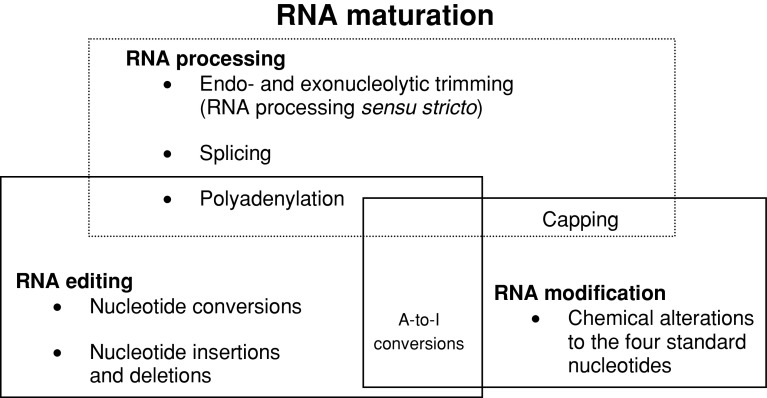Fig. 1.
The term “RNA maturation” is used as an umbrella term for different phenomena of biochemical transformations of RNA transcripts. “RNA processing” is mostly used to describe changes affecting sequence stretches of variable length through cutting and rejoining processes such as intron splicing. It is generally also used for the capping and polyadenylation processes at the 5′ and 3′ ends, respectively, of eukaryotic nucleus-encoded mRNAs. The term “modification” in contrast is best reserved for biochemical alterations resulting in nonstandard nucleotides (mostly identified in tRNAs and rRNAs) such as pseudouridine, dihydrouridine, methylated nucleotides, and many more. Finally, “RNA editing” comprises all sequence changes in the four-letter RNA alphabet relative to the gene template other than splicing and polyadenylation that could in principle be encoded in the DNA directly. Overlaps in terminology exist, however: the capping nucleotide is a methylated guanosine added in inverted orientation, stop codons may emerge only after polyadenylation, and inosine nucleotides (read as guanosine) result from deamination of adenosines

